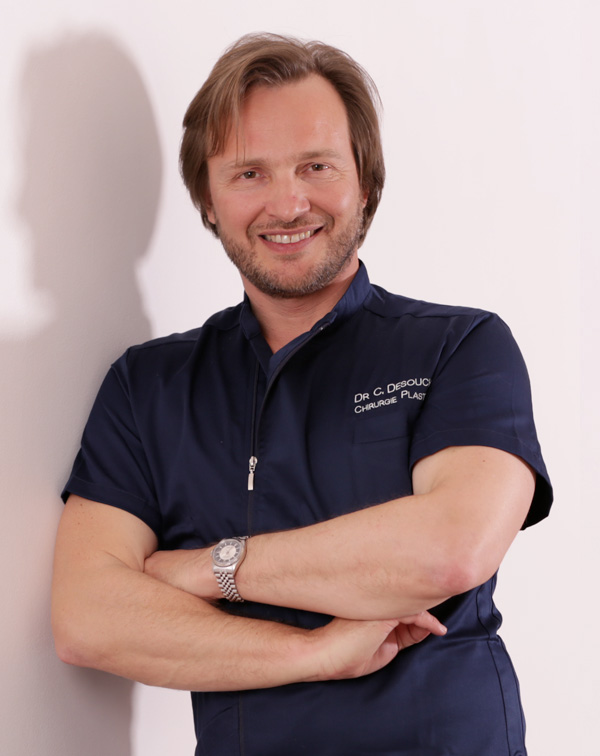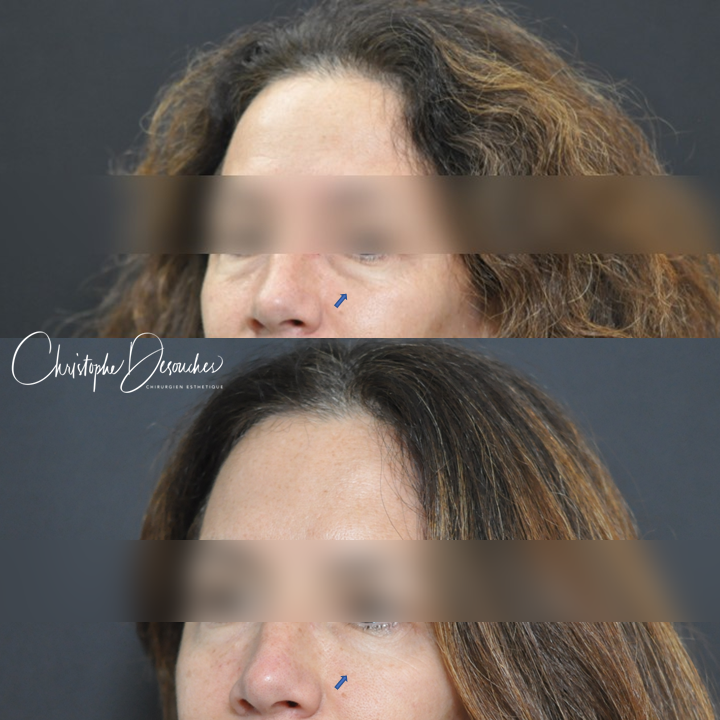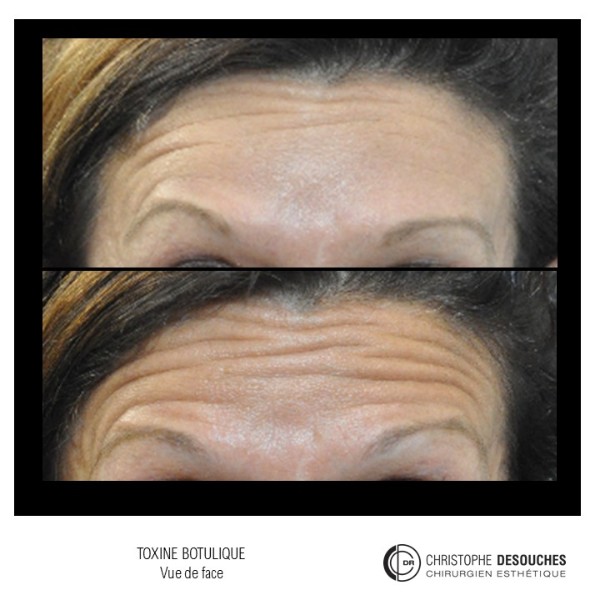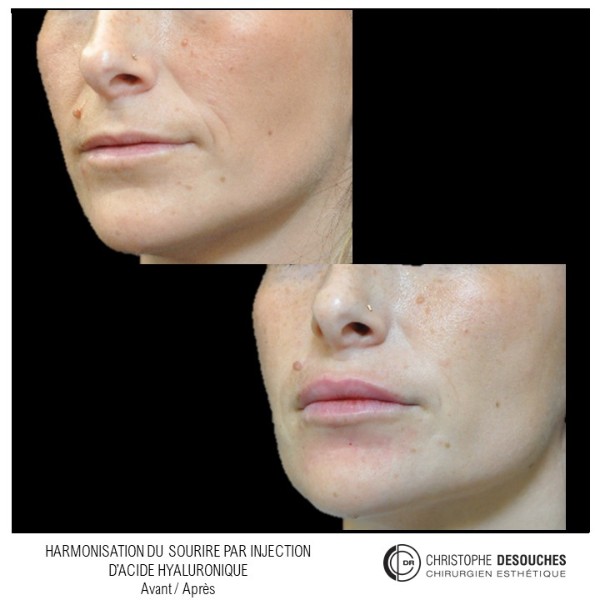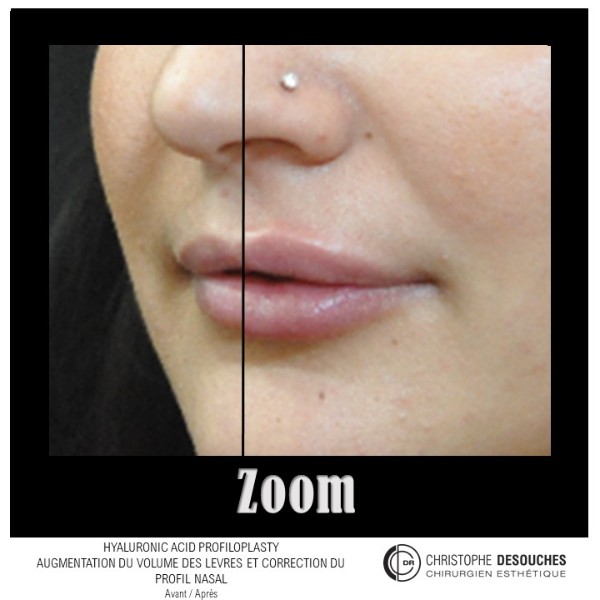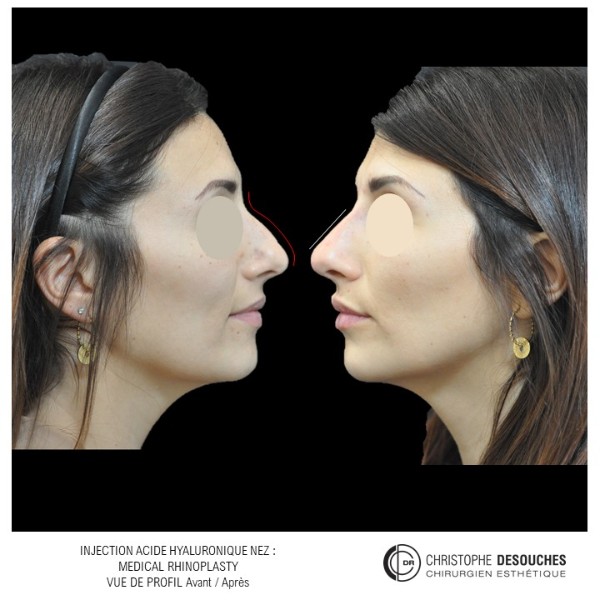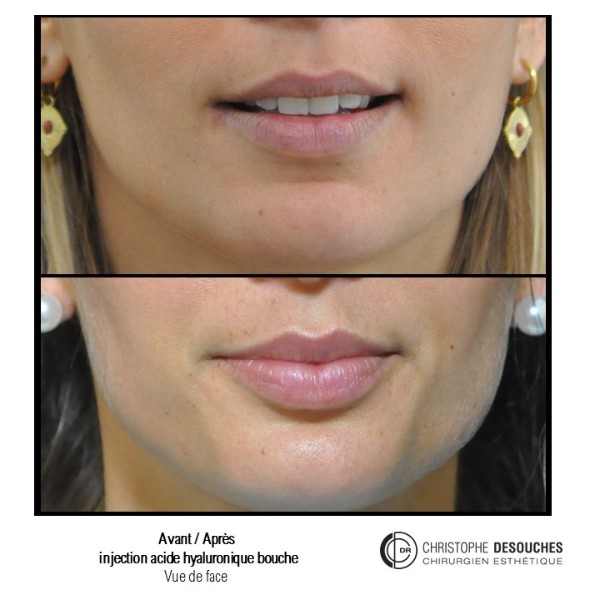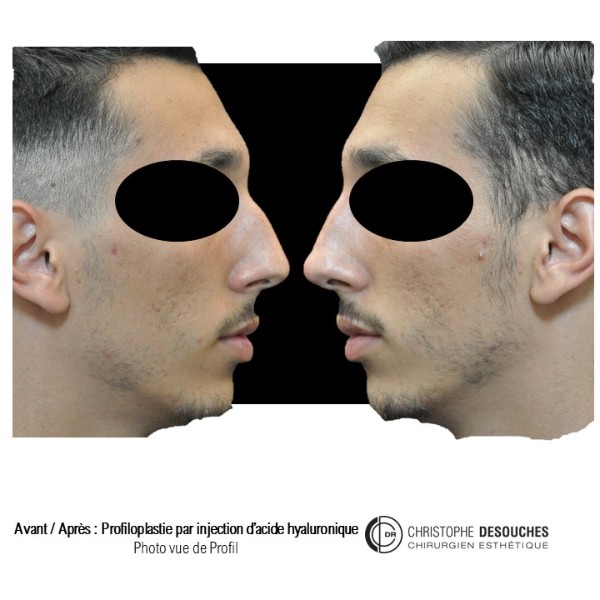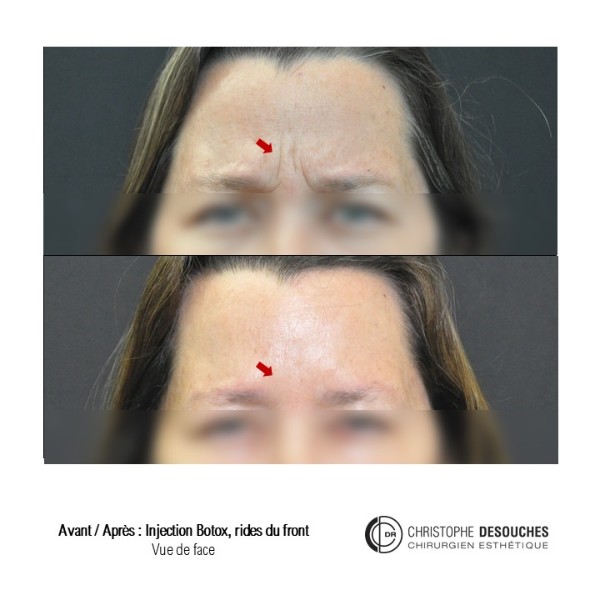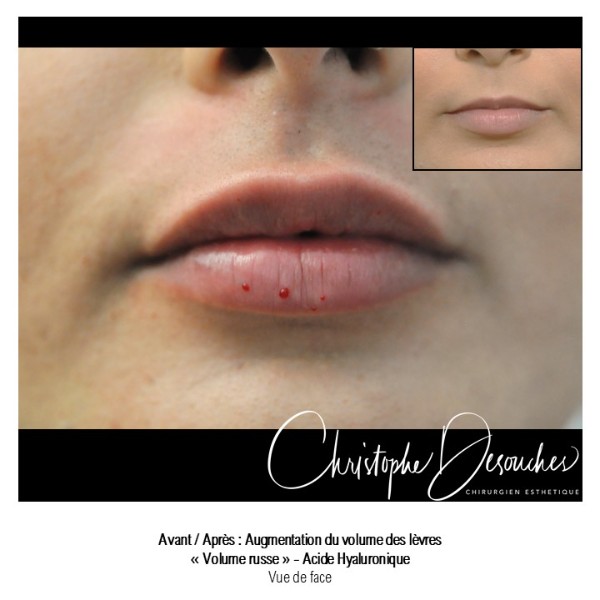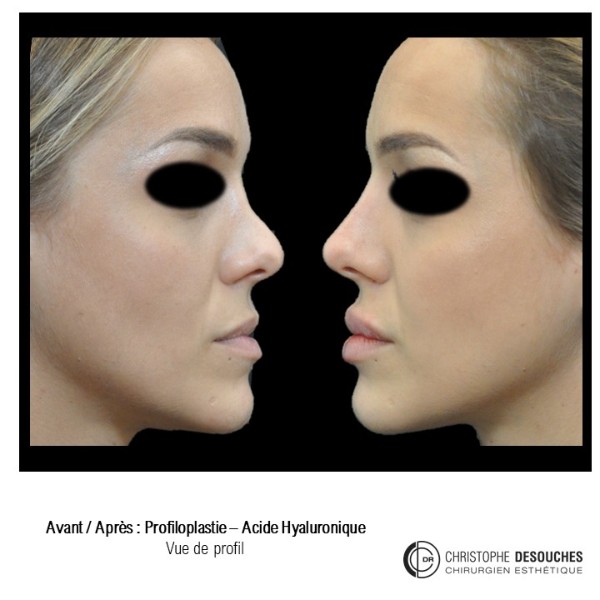Vous souhaitez recourir aux injections d’Acide Hyaluronique pour votre visage ou votre silhouette et vous hésitez, vous vous posez des questions.
Voici les réponses du Dr Christophe Desouches, chirurgien esthétique à Marseille, aux questions les plus fréquentes concernant l’Acide Hyaluronique.
The skin to stay young and supple must stay hydrated. It has for this a natural ingredient of the body (a polysaccharide) present especially in the dermis: Hyaluronic Acid.
However, over the years, this youthful marker which acts as a damping and lubricating agent gradually becomes scarce, reducing the firmness and elasticity of the skin tissues, which lose their radiance and tone.
Hyaluronic Acid is a binder of water molecules, which means it binds water into cells, and therefore works as a powerful moisturizer. "Holding nearly 1000 times its own weight in water, Hyaluronic Acid can pull moisture out of the air and keep your skin hydrated," says Dr. Christophe Desouches.
Due to its composition, Hyaluronic Acid also works as an extremely well tolerated volumizer.
Depending on its density and concentration, Hyaluronic Acid will be used as a “filler” or as a “volumizer”, depending on whether the aim is to correct wrinkles or compensate for a loss of volume.
Almost half of Hyaluronic Acid is found in the dermis. It is also found naturally in the eyes, nerves, hair, and cartilage.
In terms of food, it is found in certain fruits and vegetables (tomatoes, kiwi, citrus fruits, etc.), cereals and legumes, oilseeds (nuts, almonds, etc.).
Retains hydration : it is its extraordinary ability to retain water in the body that appeals so much to beauty professionals. This makes it a key ingredient in maintaining or improving skin hydration.
Reduces the appearance of wrinkles As dehydrated skin is one of the main causes of wrinkles, Hyaluronic Acid replenishes lost moisture and helps reduce the appearance of fine lines. This is true for static wrinkles (“wrinkles at rest”) caused by the degradation of collagen, but not for wrinkles due to facial expressions (in this case Botox is indicated, see below the differences between Botox and Hyaluronic Acid) .
A safe option foradding volume : given that the composition of Hyaluronic Acid is closely linked to natural substances present in our body, it is an extremely well tolerated volumizer. It can help add volume to areas like the lips and cheeks, which lose volume over time.
Rapid absorption : unlike some skin care products, Hyaluronic Acid rapidly penetrates the epidermis and dermis.
Non irritant : For most people, Hyaluronic Acid is non-irritant and safe for all skin types.
Absorbable: When used as a filler, Hyaluronic Acid lasts about two years. It dissolves naturally, which means that it gradually wears off. You can also have the product removed by a doctor using a specific enzyme (hyaluronidase) if necessary.
Generally, there are no major side effects from Hyaluronic Acid, which is closely related to natural substances already present in the body.
As Hyaluronic Acid is often used as a filler, it can cause swelling as a side effect, but most of the reactions come from the injection itself, not from the Hyaluronic Acid.
There are few contraindications:
- Autoimmune diseases
- Known hypersensitivity to Hyaluronic Acid
- Pregnancy and breastfeeding
- Infectious problems at the injection sites (Herpes, Acne)
- Porphyria
Dr Christophe Desouches uses the best Hyaluronic Acid-based fillers, in particular from Fillmed, Teoxane, Restylane, Juvederm and Neovia laboratories. These are Hyaluronic Acid-based gels from non-animal sources, referenced in France with CE marking. After trying almost every fillers over the years, we have selected these Hyaluronic Acid fillers for their versatility, improved safety profile, and high patient satisfaction.
Each patient has a "beauty passport" to have the traceability of the products injected, which identifies all the products used, with in particular the brand and the reference of the injected hyaluronic acid.
It is strongly recommended to avoid the use of products found on the Internet and of unknown origin.
The face is undoubtedly the area most improved by Hyaluronic Acid injections:
- Wrinkles
- Forehead
- Eyes and eyelids
- Nasolabial folds
- Nose
- Medical rhinoplasty
- Lips
- Russian lips
- Cheekbones
- Profiloplasty (nose, chin, lips)
- Chin
- Jawline Contouring
- Neck
Hyaluronic Acid is also regularly used to improve the lives of patients in the buttocks and sex area:
- Buttock augmentation
- Male increase
- Female G-spot increase
- Improved vaginal hydration
The majority of patients tolerate the injections well. Sometimes they can feel uncomfortable, but Dr Christophe Desouches has several techniques to make them as painless as possible.
First, the use of a numbing cream to numb the skin before the injection. Letting the cream sit in place for at least 10 minutes before injection makes a noticeable difference in comfort level, especially for lip fillers.
More rarely, the surgeon will use injectable xylocaine.
The longevity of a filler depends on its composition, the metabolism of the person and the location of the injection (cheek, chin, eyes, etc.).
Hyaluronic Acid fillers used by Dr Christophe Desouches last an average of 6 to 12 months.
The human body gradually breaks down the filling material over time.
However, repeated filler injections do not cause any kind of damage to the skin or soft tissue. So, if you decide to stop taking fillers, you will just gradually return to your pre-fill appearance.
Redness or bruising at the injection sites.
Bruises, swelling, and bumps can appear and go away over time.
Sensitivity disorders with a feeling of muscle tension or fixity.
Imperfections of correctable results during retouching at one month: persistence of fine lines, asymmetry, raised eyebrow, mimicry disorders.
Infection (rare).
Injection into an artery or vein (rare but serious complication).
On the days preceding the injection, it is recommended not to take drugs that modify the flow of the blood (aspirin, anti-inflammatory drugs, etc.) in order to reduce the risk of hematomas. It is prudent to avoid alcohol and certain herbal supplements.
Many people think that Botox and Hyaluronic Acid are the same, but they are not!
True, they can both be used for wrinkles or lips. And although they share many similarities, they offer different benefits and results.
What is Botox?
Botulinum toxin type A is a muscle relaxant produced from bacteria. A safe and effective product if you hire a good professional and certified cosmetic surgeon.
Botox only works on expression lines, but not on static lines (“lines at rest”) caused by the breakdown of collagen.
Repeat treatments are necessary because Botox is not a permanent treatment.
What is Hyaluronic Acid?
We have already seen in detail above in these questions and answers what Hyaluronic Acid is. A polysaccharide naturally produced by our body, mainly used to treat “wrinkles at rest” and to plump various areas of the face.
What are the differences between Botox and Hyaluronic Acid?
Duration : Although the effect in both treatments is temporary, the duration is not the same. The approximate duration of Botox is between 4-6 months, while Hyaluronic Acid injections depend on many other factors such as where it was applied, how quickly each person's body naturally reabsorbs it, along with a variation in duration of 6 to 12 months.
Goals : Botox is mainly used to correct the wrinkles which form by wrinkling or contracting certain parts of our face, in particular in the upper third of the face such as the forehead, between the eyebrows, and the famous "crow's feet". On the other hand, Hyaluronic Acid fillers are used to reduce wrinkles and to give volume to the lips, cheekbones or chin.
Results : The results of Hyaluronic Acid injections are immediate, although the final result is usually visible after two weeks when the product has fully settled. The results of Botox start to be visible after 3 days and its final effect is visible after 10 days.
Yes, these are complementary treatments that can be performed during the same session, but not on the same area.
Some patients who want a Hyaluronic Acid injection for the lips also request Botox injections for the forehead or peri-ocular wrinkles, or to increase the chin or cheekbones.
The price of hyaluronic acid injections for a facial treatment is between €300 and €600 depending on the products used, the volume needed and the number of injections (one or two).
The price starts at € 300 for the first syringe injected, depending on the location and the product used. The price of the following syringes is decreasing.
- Hyaluronic Acid Fluid (Fine Lines) (1ml) 300 €
- Classic Hyaluronic Acid (Wrinkles and Furrows) (1ml) 300 €
- Volumizing hyaluronic acid (Cheekbones) (2ml) 600 €
- Intravaginal hyaluronic acid (Desiryal) (1ml) 450 €
Most of the cost arises from the price of the fillers, as only high quality products are used to ensure patient safety.
No health insurance coverage is possible because these are cosmetic procedures.
More details on the prices of surgery and aesthetic medicine by Dr Christophe Desouches>



